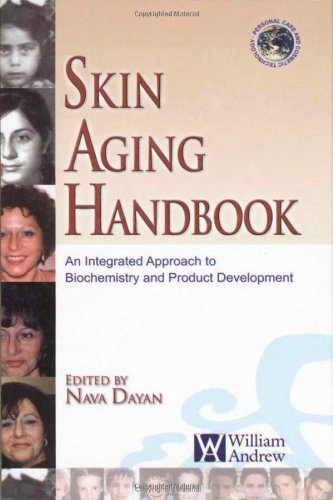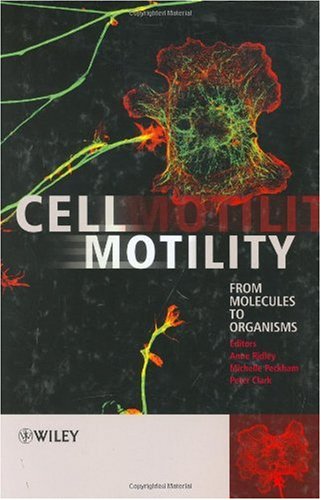Nava Dayan0815515847, 9780815515845, 9780815519034
Table of contents :
Cover Page……Page 1
Title Page……Page 2
ISBN 0815515847……Page 3
Dedication……Page 4
Table of Contents (with page links)……Page 5
Contributors……Page 7
Preface……Page 12
1. Aging Skin in Sociocultural Perspective……Page 22
1.1 Introduction……Page 23
1.2 Increased Longevity……Page 24
1.5 Changes in Understandings of Individualism……Page 25
1.6 Pro-Feminism……Page 27
1.8 The “Third Age”……Page 28
1.9 Consumption……Page 29
1.10 The Invisibility of the Aged Face……Page 30
1.12 The Social Significance of Aging Skin……Page 31
1.13 Conclusion: Skin as a Semiotic Language……Page 32
Bibliography……Page 33
2. Market Evolution of Topical Anti-Aging Treatments……Page 34
2.2 Types of Aging……Page 35
2.3 The 1980s……Page 36
2.4 The 1990s……Page 37
2.5 Common Anti-Aging Theories……Page 38
2.6.2 Vitamins……Page 42
2.7 Cosmetic Claims of the 1990s……Page 43
2.8 2000s and beyond……Page 44
2.9 Ingredients of the 2000s……Page 46
2.9.1 Peptides……Page 47
2.9.2 Phyto and Algae Extracts……Page 49
2.10 Summary……Page 50
Acknowledgments……Page 51
Notes……Page 52
3. Computer-Based Age Progression Methodologies……Page 54
3.1.1 Automatic Age Progression Systems……Page 55
3.1.2 Image Databases……Page 56
3.2.1 2D vs. 3D Age Progression Systems……Page 58
3.2.2 Shape vs. Texture Facial Deformation……Page 59
3.3.1 Age Prototypes……Page 60
3.3.2 Image Merging……Page 62
3.3.3 Image Warping……Page 63
3.3.4 Model-Based Approaches……Page 64
3.3.5 Adding Wrinkles……Page 67
3.4.2 Future Directions……Page 68
3.4.2.3 Hairstyles/Facial Occlusion……Page 69
References……Page 70
4. Structural and Biochemical Changes in Aging Skin and Their Impact on Skin Permeability Barrier……Page 74
4.2 Physiology of Human Skin……Page 75
4.2.1 Epidermis……Page 76
4.3.1 Epidermis……Page 77
4.3.2 Glands……Page 80
4.3.4 Nails……Page 81
4.3.5 Nerves……Page 82
4.4.1 Dermis……Page 83
4.4.2 Connective Tissue……Page 85
4.4.2.1 Collagen Network……Page 86
4.4.3 Elastic Tissue Network……Page 87
4.4.4 Ground Substance (Glycosaminoglycans/Proteoglycans)……Page 90
4.5 Comparison of Neonatal Skin and Adult Skin……Page 91
4.6 Permeability Changes in Aging Skin……Page 93
4.6.1.1 Stratum Corneum (SC) Barrier……Page 94
4.6.1.2 Cutaneous Blood Flow……Page 95
4.6.1.3 Enzyme Activity……Page 96
4.6.1.4 Electrophysiological Properties……Page 98
4.6.2 Permeability Studies in Animals……Page 99
4.6.3 Permeation Studies in Neonates and Infants……Page 100
References……Page 103
5. Changes in Epidermal Lipids and Sebum Secretion with Aging……Page 110
5.1.2.1 Fatty Acids……Page 111
5.1.2.2 Cholesterol……Page 112
5.1.2.3 Sphingolipids……Page 113
5.1.3 Chemical Structures……Page 114
5.1.4 Covalently Bound Lipids……Page 115
5.1.5 Minor Components……Page 116
5.1.6 Physical Organization……Page 117
5.2.1 Distribution and Physiology of Sebaceous Glands……Page 118
5.2.3 Effects of Aging on Sebum Secretion Rates……Page 119
References……Page 120
6. Skin Disorders of Inflammation and Immune Suppression in Young and Elder: A Special Role for Mast Cells……Page 124
6.1 Introduction……Page 125
6.2 Epidemiology and Prevalence of Immunological Skin Diseases……Page 126
6.3.1 Innate and Adaptive Immunity in the Skin: Cellular and Neuro-Endocrine Mechanisms……Page 129
6.3.2 Mast Cells in Skin Immunity……Page 132
6.4.1 Aging of the Skin due to Immune Modulation: Mast Cell-Induced Inflammation……Page 135
6.4.2 Alteration of Immunity in Aged Skin……Page 137
6.5.1 Inflammatory Disorders……Page 139
6.5.2 Neoplastic Diseases……Page 141
6.6 Conclusions……Page 143
References……Page 145
7. Cellular Senescence and Skin Aging……Page 148
7.2 Skin Histology and Skin Cell Types……Page 149
7.2.1.1 Keratinocytes……Page 150
7.2.1.2 Melanocytes……Page 151
7.2.2.1 Fibroblasts……Page 152
7.2.4 Epidermal Appendages……Page 153
7.3 Cellular Senescence……Page 154
7.4.2 Keratinocytes……Page 156
7.5 Altered Gene Expression Pattern of Senescent Skin Cells……Page 157
7.6 Skin Stem Cells and Their Relevance to Skin Aging……Page 159
7.7 Possible Contribution of Cellular Senescence to Skin Aging……Page 162
7.8 Concluding Remarks……Page 163
References……Page 164
8. Prevention and Treatment of Aging Skin with Topical Antioxidants……Page 168
8.1 Introduction……Page 169
8.2 Vitamin C……Page 170
8.2.2 Actions and Efficacy……Page 172
8.3 Vitamin E……Page 176
8.3.1 Formulation……Page 177
8.3.2 Actions and Efficacy……Page 178
8.5 Vitamin C with Vitamin E and Ferulic Acid……Page 182
8.6.1 Formulation……Page 184
8.6.2 Actions and Efficacy……Page 185
8.7 Selenium with Vitamin E……Page 187
8.8 Conclusion……Page 189
References……Page 190
9. Skin Aging in the Asian Population……Page 196
9.2 Skin Aging……Page 197
9.3 How is Asian Skin Different?……Page 198
9.4 Differences in Skin Color and the Role of Melanin……Page 200
9.4.1 Types of Melanin Pigment……Page 201
9.4.2 Melanin Production……Page 202
9.5.1 Protective Mechanisms in Darker Skin Types……Page 203
9.5.2 Pigmentary Changes……Page 204
9.5.3 Dermal Changes……Page 207
9.5.4 Clinical Scales and the Occurrence of Wrinkling……Page 208
9.6 Treatments of Photoaging in Asian Skin……Page 210
9.6.2 Retinoids……Page 211
9.6.3 alpha-Hydroxy Acids……Page 212
9.6.4 Treatment for Aging Skin Using Lasers……Page 213
9.7 Skin Sensitivity……Page 214
9.8 Conclusions……Page 215
References……Page 216
10. The Use of Natural Compounds and Botanicals in the Development of Anti-Aging Skin Care Products……Page 224
10.1 Introduction……Page 225
10.2 Oxidation and Skin Aging……Page 227
10.2.1 Botanical Antioxidants……Page 228
10.2.2 Endogenous Antioxidants……Page 229
10.2.3 Polyphenols……Page 231
10.2.4 Tea (Camellia Sinensis)……Page 232
10.2.5 Grape (Vitis Vinifera)……Page 234
10.2.6 Other Tannins……Page 235
10.2.7 Lignans……Page 236
10.2.8 Phenylpropanoids……Page 237
10.2.9 Miscellaneous Natural Antioxidants……Page 239
10.2.10 Carotenoids……Page 240
10.2.11 Other Mechanisms for Reducing Oxidative Cell Damage……Page 241
10.3.1 Causes and Consequences of Inflammation……Page 242
10.3.3 Restoration of Skin’s Barrier Function……Page 245
10.3.4 Control of the Inflammatory Pathways: The Multi-Prong Approach……Page 246
10.3.4.1 Control of Phospholipase A_2 Activity……Page 248
10.3.4.2 Control of the Cyclooxygenase Pathway……Page 249
10.3.4.3 Control of the Lipoxygenase Pathway……Page 250
10.3.4.4 Control of Chemotaxis and Cellular Adhesion……Page 251
10.3.4.5 Control of MMPs……Page 252
10.3.5 Summary……Page 253
10.4 The Extracellular and Skin Aging……Page 255
10.4.1 Antioxidants and the ECM……Page 256
10.4.2 Hormones and the ECM……Page 257
10.4.3 Other Secondary Metabolites That Affect the ECM……Page 258
10.5 Skin Barrier Integrity and Aging……Page 259
10.6 DNA Damage and Repair in Aging……Page 262
References……Page 265
11. Approaches to the Development of Cosmetic Products to Counter the Effects of Skin Aging……Page 284
11.2 Aging Changes in the Face……Page 285
11.3 Targets in Skin: The Surface Matters (Stratum Corneum, SC)……Page 287
11.4 The Nucleated Layers of Epidermis……Page 288
11.5 Dermal-Epidermal Junction (DEJ) or Basement Membrane Zone (BMZ)……Page 292
11.6 The Dermis……Page 294
11.7 Fibroblasts……Page 295
11.9 The Neuronal Component……Page 299
11.10 Impact of Lifestyle on Aging……Page 301
11.12 Acknowledgments……Page 302
References……Page 303
12. The Design and Development of Anti-Aging Formulations……Page 310
12.1.1 Background……Page 311
12.1.2 Skin Aging: Physiology……Page 313
12.2 Active Ingredients Used in Anti-Aging Products……Page 316
12.3.1 Starting at the Beginning……Page 330
12.3.3 Formulation……Page 333
12.3.4 Product Attributes……Page 340
12.3.5 Product Testing……Page 341
References……Page 343
13. In Vitro Methods to Screen Materials for Anti-Aging Effects……Page 348
13.1 Introduction……Page 349
13.2.1 Cellular Senescence……Page 350
13.2.2 Replicative Senescence……Page 351
13.2.3 Stress-Induced Premature Senescence……Page 355
13.2.4 Genetic Diseases Associated with Early Senescence……Page 357
13.3 Functional Changes with Aging……Page 358
13.3.1 Changes in ECM Peptide Production……Page 359
13.3.2 Changes in MMP-1 Production……Page 361
13.3.3 Changes in Pigmentation……Page 362
13.4 Aging Related Intracellular Changes……Page 364
13.4.1 Aging Related Changes in Cellular DNA……Page 365
13.4.2 Aging Related Changes in the Mitochondria……Page 368
13.5.1 Reactive Oxygen Species and the Aging Process……Page 370
13.5.3 2,2-Diphenyl-1-Picrylhydrazyl (DPPH) and 2-2′-Azino-di-[3-Ethylbenzthiazoline Sulfonate] (ABTS) Methods……Page 371
13.5.4 2′,7′-Dichlorodihydrofluorescein (DCF) and cis-Parinaric Acid (CPA) Methods……Page 372
13.6 Final Remarks……Page 373
References……Page 374
14. Clinical Testing to Uphold an Anti-Aging Claim……Page 382
14.1 Introduction……Page 383
14.2 Subjective Assessment……Page 384
14.3 Visual Assessment by Trained Evaluators……Page 385
14.4 Non-invasive Objective Testing Methodologies……Page 386
14.4.1 Profilometric Analysis of Silicone Replicas for Fine Lines and Wrinkles……Page 387
14.4.2 Cell Turnover: Corneosurfametry and Squamometry……Page 388
14.4.3 Hydration/Humidity of Skin……Page 389
14.4.4 Skin Fatigue/Elasticity (Cutometer/Elastometer/ Ballistometer)……Page 390
14.4.6 Skin Roughness……Page 391
14.4.7 Digital Photographic Methods……Page 392
14.4.8 Skin Color Effects……Page 394
14.4.8.2 Pigmentation Analysis……Page 395
14.4.9 Skin Surface Lipids – Squamametry……Page 398
14.4.10 Ultrasound Imaging……Page 399
14.4.11 Microvasculature – Laser Doppler Profilometry……Page 401
14.4.12 Skin Autofluorescence……Page 402
14.4.13 Emerging Spectroscopic Methods……Page 403
14.5.1 Anti-Oxidative Processes and Free Radical Studies……Page 404
References……Page 405
15.1 Introduction……Page 412
15.2.1 United States……Page 413
15.2.2 European Union……Page 416
15.2.3 Japan……Page 419
15.2.4 Canada……Page 420
15.2.5 Mexico……Page 423
15.3 Conclusion……Page 424
Notes……Page 425
16. Strategic Regulatory Planning – Key to Success in Anti-aging Cosmetic Product Development……Page 428
16.1.2 Current Anti-Aging Market Trend……Page 430
16.2.1.2 Distinction between Drugs and Cosmetics in the US……Page 432
16.2.1.3 Navigating the Unharmonized Global Cosmetic Regulatory Environment……Page 434
16.2.1.4 Borderline Products in the Global Regulatory Environment……Page 436
16.3.1 Brief Overview of US Drug Regulations……Page 440
16.3.2 Overview of US Cosmetic Regulations……Page 442
16.3.3.1 Definition of Cosmetics and Corresponding Regulatory Agency……Page 448
16.3.3.2 Pre-Market Requirements……Page 449
16.3.3.4 Ingredients Control Requirements……Page 450
16.3.3.6 Labeling Requirements……Page 451
16.4.1 Non-Governmental Organizations (NGOs) Becoming the Fifth Branch of Government……Page 452
16.4.2 Green Chemistry Legislative Trend……Page 455
16.4.3 The Situation of Ever Creeping Anti-Aging Product Claims and the Weakened FDA……Page 458
16.5.1 Advanced Marketing and Claims Substantiation Planning – Regulatory Affairs Meets Marketing and Product Positioning……Page 460
16.5.2.1 Basic Product Development Principle……Page 462
16.5.2.2 Considering Consumers Peace of Mind……Page 464
16.5.2.3 Ensuring Product Safety……Page 465
16.5.2.4 Comprehensive Regulatory Lifecycle Management……Page 467
References……Page 469
AICS……Page 474
Autocrine signaling……Page 475
Bp/yr (base pairs/year)……Page 476
Chromameter……Page 477
Consumption……Page 478
Cutometer……Page 479
DNase (deoxyribonuclease)……Page 480
Environment Canada……Page 481
FD & C Act……Page 482
Gluconates……Page 483
HRT……Page 484
IND……Page 485
Linoleate……Page 486
Melanin……Page 487
M M P……Page 488
NCSN……Page 489
Northern blotting……Page 490
Parenchymal……Page 491
Population doubling……Page 492
PSL……Page 493
Restylene……Page 494
Serial analysis of gene expression (SAGE)……Page 495
Southern blotting……Page 496
Subpapillary plexus……Page 497
Tumor suppressors……Page 498
Visual Analog Scale……Page 499
Xerosis……Page 500
A……Page 501
B……Page 508
C……Page 509
D……Page 512
E……Page 513
F……Page 516
G……Page 517
I……Page 518
L……Page 520
M……Page 521
N……Page 523
P……Page 524
R……Page 526
S……Page 527
T……Page 532
U……Page 533
V……Page 534
Z……Page 535
Back Page……Page 536







Reviews
There are no reviews yet.